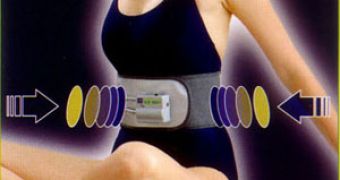Would you like to pig out, not to work and still be thin? Good news: this could happen! A new research made in lab mice which spent 15 minutes daily on a vibrating platform found that they grew 28 % less fatty tissue than the group of control animals.
But do not be fooled by waistband-jiggling vibration belts. The platform delivered extremely subtle, almost undetectable vibrations. These tremors could have imitated muscle movement required by the stem cells to differentiate into bone or muscle tissue rather than fat storing cells.
"We're not burning fat or taking fat mice and making them skinny. We're taking mice who are growing and ... influencing the decision of stem cells [so that they don't] become fat cells." said lead author Clinton Rubin, a biomedical engineer at the State University of New York, Stony Brook.
The goal of Rubin's team is finding a method to stimulate stem cells to turn into bone cells to impede bone loss triggered by zero-gravity spaceflights but also in cases of osteoporosis.
Fat cells are energy reservoirs, their development being boosted by daily extracalories consumption, but genes and other factors also control its growth.
"Just imagine a way to keep people from getting fat that is not [only] about how many Oreos they eat or how much they exercise-but about keeping them from forming fat cells in the first place," he said.
Still, experts warn that this does not mean that you can freely stuff yourselves.
"The reason we have those cells is to take [in] excess fat. If you inhibit [fat cells] and overeat, you haven't done that person a favor. The surplus lipids would end up in organs where you don't want to have surplus lipids-like the heart and the liver. People that don't have [as many] fat cells, if they overeat, get very sick-[they get] sicker at a much earlier age than people who first get fat and then develop complications." said Roger Unger, an obesity researcher at the University of Texas Southwestern Medical Center, not involved in this research.
"The idea that 'non-strenuous work' can reduce body fat is intriguing; however, the findings have to be interpreted with caution. Key information regarding the mice's energy expenditure, hormones, and metabolism remains unknown and may have impacted the results." signaled Rexford Ahima, a University of Pennsylvania endocrinologist.

 14 DAY TRIAL //
14 DAY TRIAL //